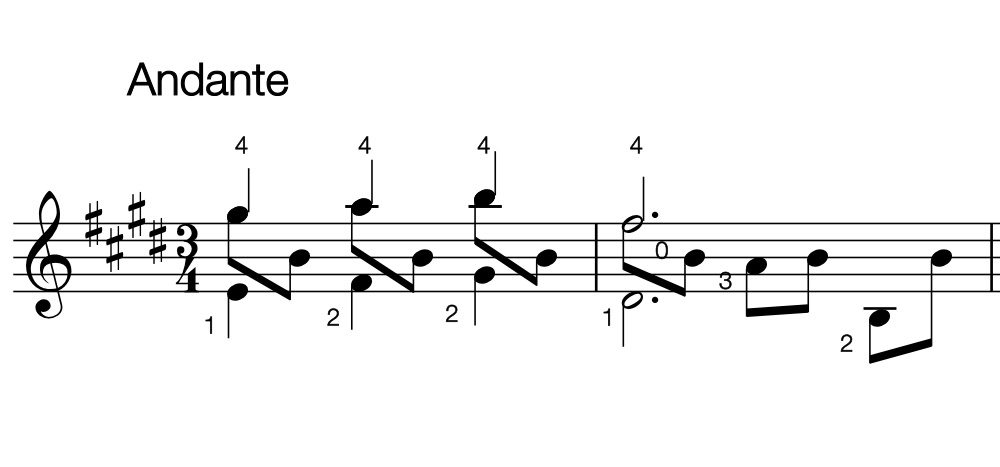Everyone needs a little help, right?
When shifting small or larger distances on the classical guitar it will be helpful to employ a guide finger. A guide finger is simply a finger that keeps in contact with the string while shifting. This is going to give you some extra security and accuracy in the shift, and it can even mean that you don’t have to look at your left hand when moving about the fingerboard.
Maintaining contact with the string does not mean that you have to press down, in fact, you only have to touch the string very lightly as your finger moves, because the movement needs to be silent. If you were to hold down the string, it would create a glissando or portamento effect, which is a rather specialized sound.
Once you have played the first note and you are ready to use the guide finger to move to the next note, release the pressure on the string, maintaining just a small amount so there is contact with the string. Shift the finger along the string and apply pressure again when it is in the new position.
On the treble strings, which are made of smooth plastic, a guide finger will stay nice and silent. On the bass strings, however, you can easily get ‘string squeak’ which is not always welcome. You can lessen string squeak by angling your finger to the side a little, so that you are not sliding on the callus but rather the fleshy pad of the finger. The other solution is to lift the finger entirely; you will have to be the judge on whether it is worth keeping a guide finger that makes a squeak or not.
Lets have a look at an example.
Lagrima is a wonderful piece and perfect to display several aspects of the guide finger in practice. The first five measures use the fourth finger for the upper melody voice, and you can keep that finger down for the entire time! As the notes are on the first string, we will not have any squeaks from the shifting, but we will need to look out for unwanted glissando effects. Using the fourth finger as a guide finger will help balance the hand in the first measure, and give accuracy to the shift in the second measure (back to the F#).
Looking at the lower voice, we can see that there is an option to use the second finger as a guide finger on the fourth string. Try this yourself, and you will find that it is quite difficult not to make a string squeak. I think the best solution for this passage is to lift the second string in the first measure as it shifts and keep the fourth finger down on the melody.
To study this technique in-depth you can take the comprehensive Technique & Musicianship Course Level 2 in our membership packages! Over 3 hours of video and more than 20 worksheet downloads will guide you through a structured and focused course of study.


Not a friend of PFD’s for music, I am wondering if these works are available in hard copy. If they were hard copy I would be most prone to purchase but if it is PDF I would not waist my time or effort at trying to deal with music via computer.
I would appreciate a reply as to whether these materials can be obtained as hard copies.
Hi Tom, thanks for asking. The books are not currently available in hard copy mainly because I don’t have the funds or means to get them printed and mailed out. I will look into though, seeing as you asked.